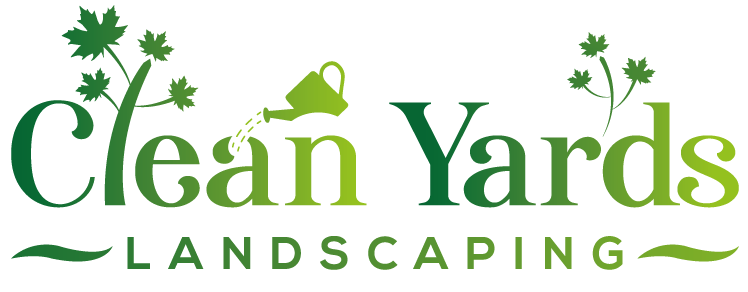Kars: Prevent Plant Loss with Spring Healthcare Plan
Ready to revive your garden after winter? Get a personalized quote for spring clean-up and plant care today!
Request Your Free QuoteQuick Summary: Spring Plant Healthcare Essentials
- Assess plants for winter damage (broken branches, winter burn, frost heave).
- Clean up debris (leaves, dead stalks) to prevent disease and allow air circulation.
- Prune dead, damaged, or diseased wood promptly. Time pruning carefully for flowering shrubs.
- Improve soil with compost and consider aeration if compacted.
- Apply mulch to retain moisture, suppress weeds, and regulate soil temperature.
- Water strategically, weed proactively, and monitor for pests/diseases.
- Choose resilient, zone-appropriate plants for long-term success.
Introduction: Wakey Wakey, Plants! Spring Healthcare in Kars
Hey Kars! Can you feel that gentle shift in the air? Spring is *finally* nudging its way into the Ottawa region, and your landscape is probably itching to wake up from its long winter slumber. But let's be honest, after months buried under snow and enduring those classic freeze-thaw cycles our area loves to throw at us, your gardens, shrubs, and lawn might be feeling a bit groggy and stressed out. Think of it like trying to run a marathon right after rolling out of bed!
That’s precisely why we’ve put together our 'Spring Healthcare Plan'. It’s more than just a simple spring clean-up; it's a thoughtful wellness check for your entire yard, designed to help your plants recover from winter and get the best possible start to the growing season. We focus on giving your greenery the boost it needs to shake off the winter blues and thrive. This proactive approach to landscaping helps ensure your Kars property—and those in lovely nearby communities like Manotick—looks vibrant and healthy all summer long. Let's get your outdoor space ready for sunshine! For insights from local gardeners, check out the Master Gardeners of Ottawa-Carleton website.
Why Spring Kickstarts Garden Health (Especially After an Ottawa Winter!)
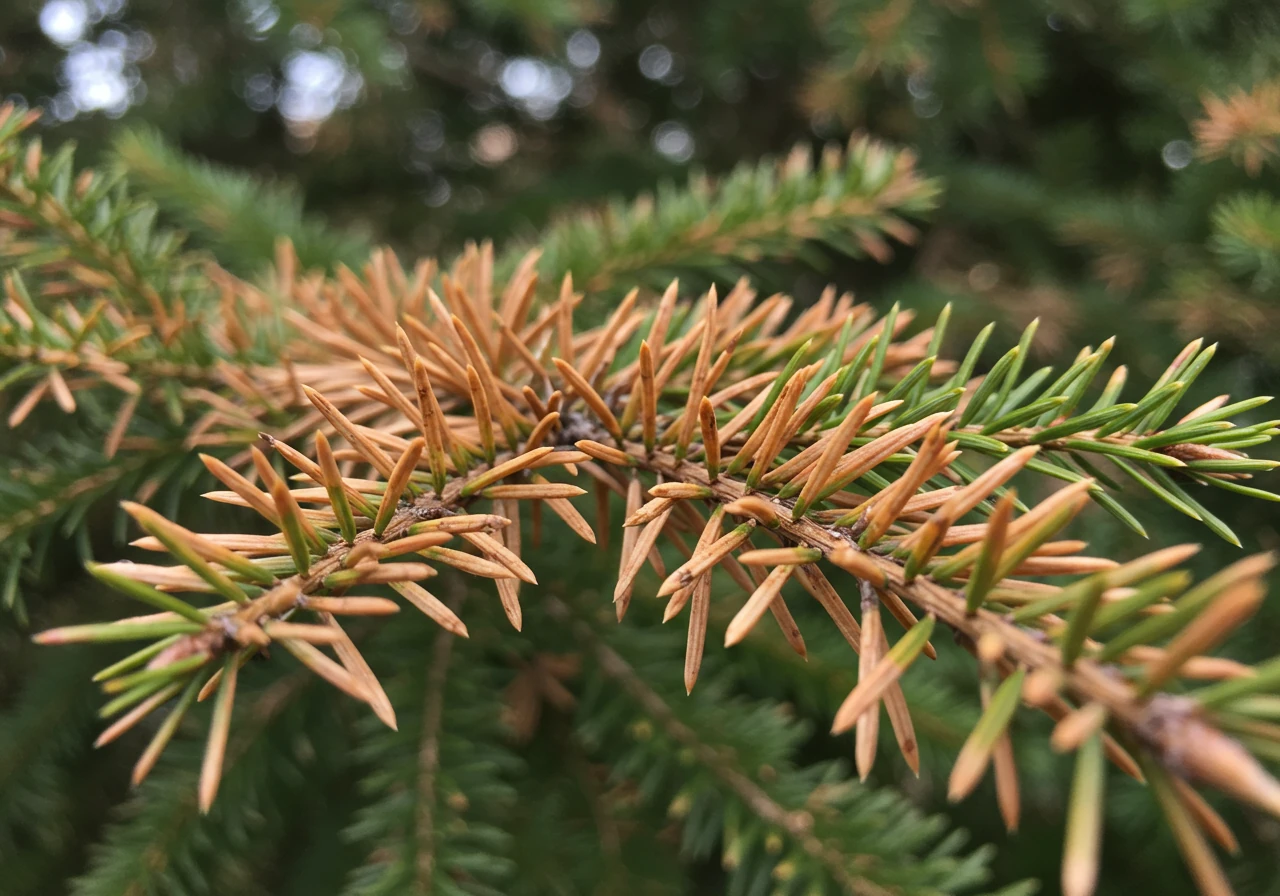
Alright, let's chat about *why* that spring garden spruce-up is more than just making things look pretty, especially after one of our classic Ottawa winters. Face it, our winters aren't exactly a gentle nap for your plants. They endure heavy snow, potential ice storms, biting winds, and that lovely freeze-thaw cycle that seems to confuse the ground itself. It’s less of a slumber and more like an endurance challenge! Plants emerge stressed, tired, and sometimes a bit battered – kind of like how *we* feel by March.
Think about what your garden just went through:
- The Big Squeeze: Heavy snow and ice can weigh down and snap branches on your beloved trees and shrubs. Ignoring this damage is like leaving a wound open. Proper assessment and timely Kars Tree Care: Essential Pruning for Healthy Growth is key to prevent disease and encourage strong new growth.
- Groundhog Day (Freeze-Thaw Edition): When the temperature bounces above and below freezing, the soil expands and contracts. This can heave perennials and bulbs right out of the ground, exposing their vulnerable roots. Ouch! Gently settling them back in and adding a protective layer of mulch works wonders. Consider reading the City of Ottawa's gardening tips for local advice.
- Salty Situation: Road salt is a necessary evil for safe driving, but it's terrible news for plants near driveways or sidewalks (folks in places like Barrhaven know this struggle well!). Salt sucks moisture out of soil and roots, causing dehydration and burn. Spring rains help flush it, but proactive care is often needed.
- Winter Leftovers: Once the snow *finally* melts, it reveals compacted soil, soggy leaves, dead plant matter, and other debris. This layer can suffocate new shoots, block water and air, and become a breeding ground for pests and diseases. A thorough Ottawa Yard Cleanup Service can handle this efficiently.
This is why spring care is the ultimate kickstart. It's *preventative healthcare* for your landscape. By clearing away winter debris, addressing damage promptly, aerating compacted soil, and checking overall plant health, you're giving your garden a clean slate and the best possible chance to thrive. Remember how crucial preparation is *before* the cold hits, like with Kars Winter Patio Plant Prep: Bringing Greenery Indoors? Well, spring care is the vital recovery phase *after* the battle.
It helps ensure the good work from your Kars Fall Garden Care and Plant Health Check wasn't in vain. Addressing small issues now – a broken branch, a patch of salty soil, emerging weeds – prevents them from becoming big, costly problems later. This attention extends to every part of your yard, even ensuring Kars Pond Maintenance for Clear Water All Summer if you have a water feature. Think of it as setting the stage for a season of healthy growth and beauty. If tackling it all feels overwhelming, exploring professional Landscaping and Yard Care Services can give your garden the expert boost it needs.
Your Post-Winter Plant Check-Up: Assessing the Damage
Okay, the snow's mostly gone (hooray!) and your Kars garden is blinking in the spring sunshine. But before you break out the lounge chairs, it’s time for a little post-winter wellness check for your plants. Think of yourself as a garden detective, looking for clues about how your greenery weathered the Ottawa winter. A thorough inspection now can save you headaches later. Plus, it's a great excuse to get outside! Tackling the assessment yourself is step one, but remember, a good Spring Property Clean Up can make spotting issues much easier by clearing away all that winter gunk.
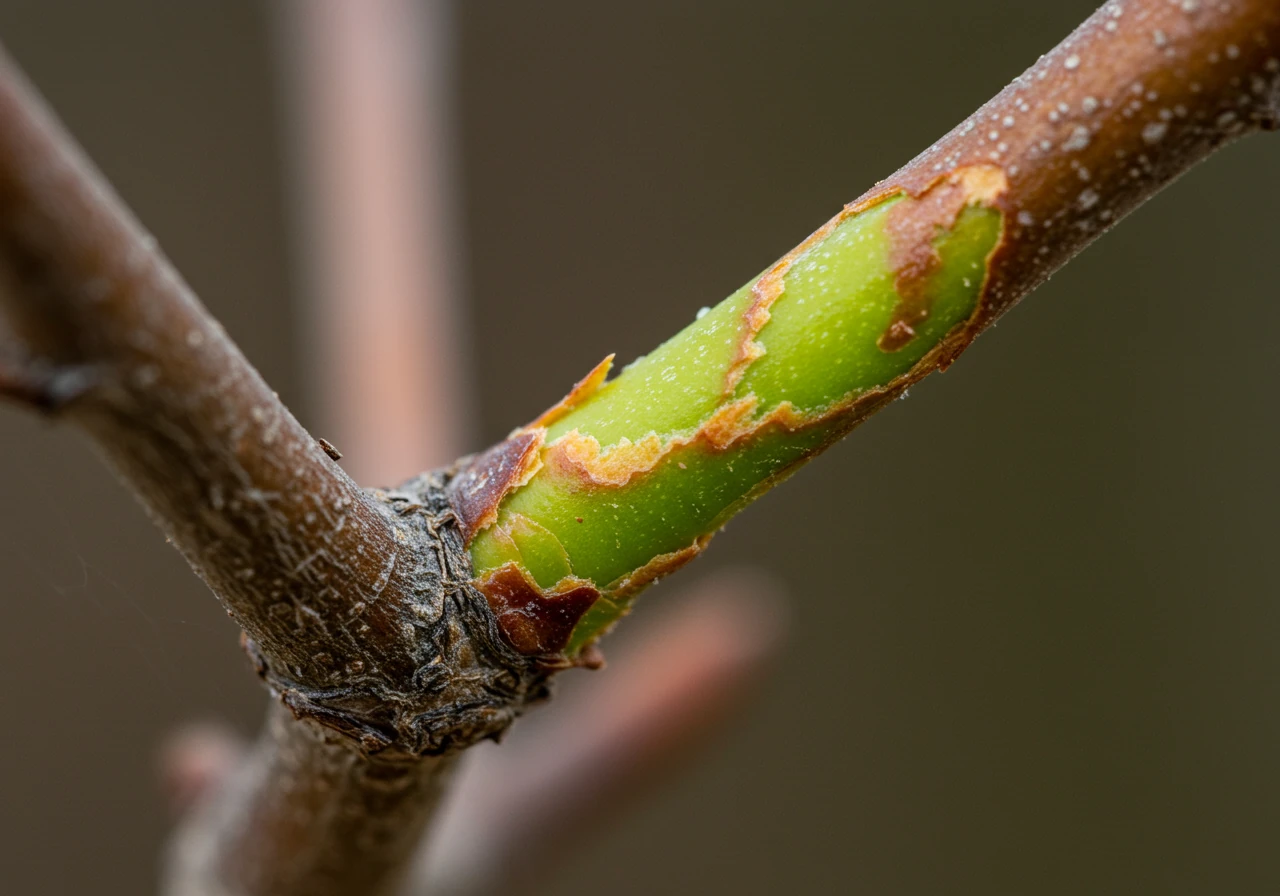
Let's grab our metaphorical magnifying glasses and get started:
- Trees - The Tall Ones:
- Look up! Scan for broken, cracked, or hanging branches – winter winds and heavy snow can be brutal. These need careful pruning.
- Check the trunk for cracks (frost cracks) or areas where bark might be chewed off near the base (pesky mice or voles seeking winter snacks – called girdling). Significant girdling can be fatal, so check this carefully.
- Is the tree leaning more than usual? Significant leaning could indicate root issues potentially worsened by winter conditions.
- Shrubs - The Middle Ground:
- Examine stems for breaks or dieback. Evergreens like cedars or junipers might show 'winter burn' – brown, dry patches, especially on the side that faced the harshest wind or strongest winter sun.
- Look for signs of salt damage if shrubs are near roads or walkways – typically brown, crispy edges on leaves or needles. This is a common sight after our Ottawa winters!
- The Scratch Test: This is your secret weapon! Gently scratch a tiny bit of bark off a questionable twig with your fingernail. Is it green and slightly moist underneath? Hooray, it's alive! If it's brown, brittle, and dry, that part is likely dead and can be pruned off once you're sure. This helps distinguish between late bloomers and actual casualties.
- Perennials & Garden Beds - The Ground Crew:
- Did the freeze-thaw cycle push any plants up out of the ground? This 'frost heave' exposes roots. Gently press them back into the soil and consider adding some mulch around the base once the ground isn't frozen solid to help stabilize them.
- Check the crowns (the central base where stems emerge) for mushiness or softness, which often indicates rot from sitting in cold, wet conditions.
- Be patient, but keep an eye out for tiny green shoots emerging from the base – the first hopeful signs of life! Some perennials are just fashionably late to the spring party.
- Soil Check-Up:
- Poke around gently once the ground thaws. Is the soil super compacted from snow weight? Can water penetrate easily, or does it just sit on top? Compacted soil might benefit from aeration later in spring.
- Notice any white, crusty residue on the soil surface near driveways or sidewalks? That's leftover road salt. While spring rains help flush it, heavily affected areas might need extra watering or even soil amendment. Soil types vary across our region, from the heavier clay common in parts of Nepean to the sandier loam you might find near Greely, and this affects how well salt drains away or how easily soil compacts. Learn more about local soil conditions from resources like the Rideau Valley Conservation Authority.
Identifying winter damage early is key to effective landscaping recovery. Minor pruning and addressing issues like frost heave now can prevent bigger problems down the road. If the damage looks extensive, like large broken limbs or widespread dieback, or if you're just not sure how to best help your plants bounce back, exploring professional Landscaping and Yard Care Services can provide expert assessment and solutions.
Once you have a clear picture of what needs doing, a dedicated Kars Spring Yard Cleanup Service can efficiently handle the removal of dead plant matter, fallen branches, and winter debris. Whether you're in Kars or another part of the city, a thorough Ottawa Yard Cleanup Service gets your property ready for the growing season. Remember, consistent Garden Maintenance and Plant Health Care throughout the spring and summer will give your recovering plants the best chance to thrive.
Need help assessing winter damage or performing crucial spring pruning?
Get Professional Help With Your Garden AssessmentSpring Task Focus
Essential Spring Clean-Up
Removing winter debris is step one. Gently rake leaves, twigs, and dead plant matter from lawns and garden beds. Be careful around emerging bulbs and perennials. This prevents suffocation, improves air circulation, and reduces hiding spots for pests.
Consider services like City Yard Cleanup Service for larger properties.
Strategic Pruning
Focus on the 3 D's: Dead, Damaged, Diseased wood. Remove these immediately. For flowering shrubs, know *when* they bloom. Prune summer bloomers (new wood) in early spring. Prune spring bloomers (old wood) *after* they flower. Proper tree care and pruning is vital.
Soil Health and Mulching
Once the soil is workable, amend with compost to improve structure and add nutrients. Soil preparation is key. Apply a 2-3 inch layer of organic mulch (like shredded bark) around plants, keeping it away from stems/trunks. Mulching and edging provides a clean look and numerous benefits.
The Kars Spring Healthcare Plan: Key Treatments
Okay, so you've done your garden detective work and assessed the situation after that long Ottawa winter nap. Now, it's time for the "healthcare" part – the actual treatments to get your Kars landscape back in fighting shape! Think of this as the spa day your plants desperately need. Here are the key treatments in our Spring Healthcare Plan:
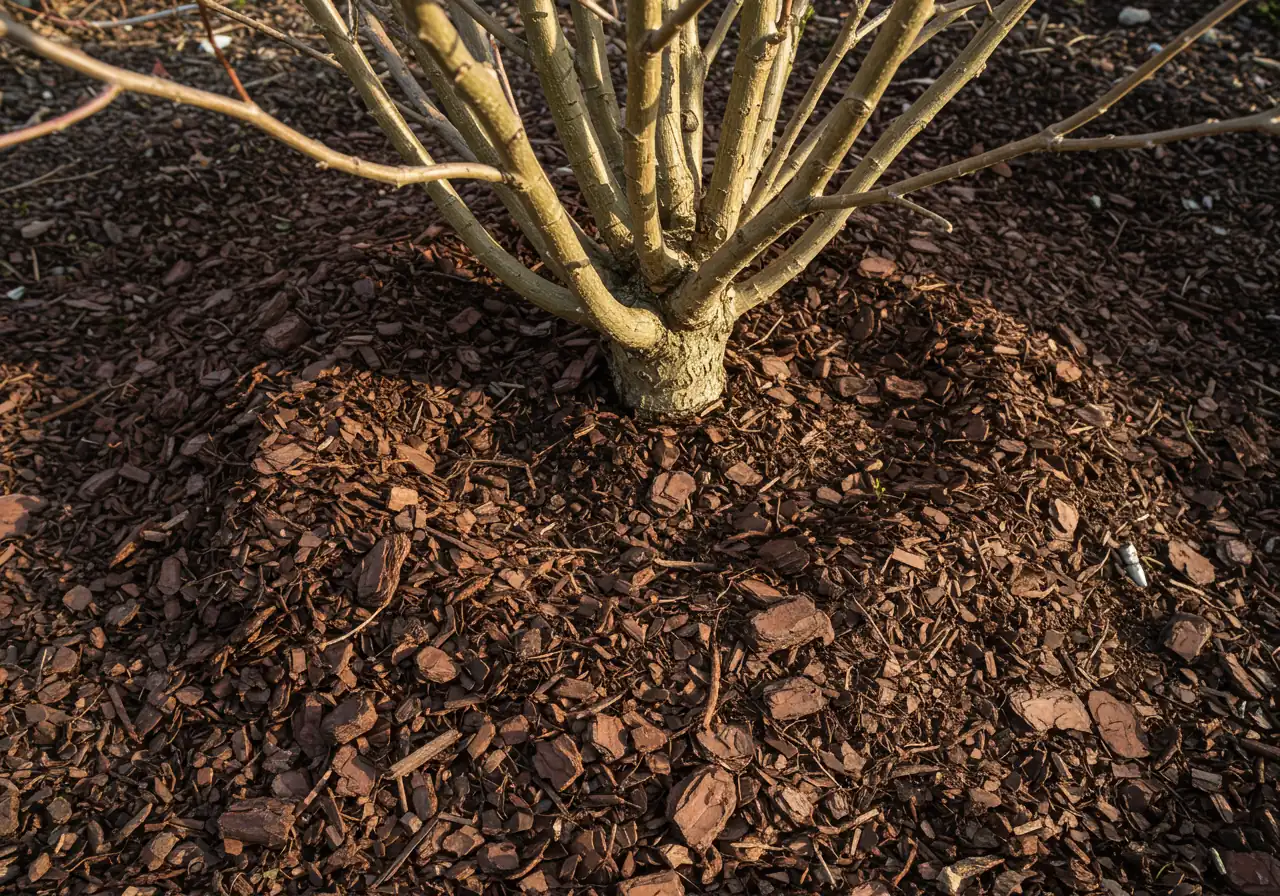
1. The Big Clean-Up: Clearing the Canvas
First things first, you can't nurse plants back to health if they're buried under last year's soggy leaves, fallen twigs, and other winter debris. This layer suffocates emerging growth, invites pests, and can promote disease.
- Actionable Tip: Gently rake leaves and debris off garden beds and lawn areas. Be careful around emerging perennial shoots and bulbs – they're fragile! Remove any leftover annuals from last year. This initial sweep makes everything else easier. If the task feels daunting, remember that professional help is available; for instance, folks looking for a thorough job might seek out a Dedicated Marionville Property Cleanup Service or similar options closer to them like a Metcalf Property Cleanup Service.
2. Pruning Power: The Right Snip at the Right Time
Pruning is crucial for removing winter damage and encouraging healthy new growth, but timing is everything, especially with flowering shrubs!
- Dead, Damaged, Diseased: *Anytime* you see branches that are clearly dead (use the scratch test!), broken by snow, or showing signs of disease, prune them out immediately, regardless of the plant type. Cut back to just above a healthy bud or branch junction.
- Summer-Blooming Shrubs: Shrubs that bloom on *new* wood (growth from the current season), like potentilla, spirea, and hydrangeas (most types common here), can be pruned in early spring before they leaf out significantly. This encourages vigorous new growth that will produce flowers.
- Spring-Blooming Shrubs: Be careful with these! Shrubs that bloom on *old* wood (last year's growth), like lilacs, forsythia, and weigela, should *not* be pruned in early spring, or you'll cut off the flower buds. Wait until *after* they finish blooming to shape them or reduce their size.
- Trees: Focus on removing lower branches interfering with paths, crossing/rubbing branches, and any winter damage missed earlier. Large tree pruning is often best left to professionals.
3. Soil Spa Day: Amending and Aerating
Our local soil can be a mixed bag – from heavier clay often found in areas like Barrhaven to sandier stretches closer to the river in places like Richmond. Winter often leaves soil compacted and sometimes salty near walkways.
- Actionable Tip: Once the soil is workable (not soggy or frozen), gently cultivate the top few inches around perennials and shrubs. Top-dressing with a layer of good quality compost (about an inch or two) is one of the *best* things you can do. Compost improves drainage in clay soil, helps sandy soil retain moisture, and adds vital organic matter and nutrients. Gently work it into the surface without disturbing roots too much. If salt damage is suspected, extra watering in that specific area can help flush salts deeper into the soil profile. Consider our soil preparation services for optimal results.
4. Gentle Feeding: The First Meal of the Season
Your plants are waking up hungry, but avoid shocking their sleepy systems with harsh chemical fertilizers right away.
- Actionable Tip: Opt for a slow-release granular fertilizer designed for trees and shrubs, or stick with organic options like compost or well-rotted manure. Apply according to package directions, usually scattering it around the base of the plants out to the drip line (the edge of the branches). Watering it in helps it start working. Consistent, gentle feeding is part of good Garden Maintenance and Plant Health Care throughout the season.
5. Mulch Magic: The Protective Blanket
Mulching is like tucking your plants back into bed, but in a good way! Applying a fresh layer of mulch after cleanup and feeding has multiple benefits.
- Benefits: Suppresses weeds (yay!), retains soil moisture (less watering!), moderates soil temperature (protects roots from lingering chills or sudden heat), and improves soil structure as it breaks down (if organic).
- Actionable Tip: Apply a 2-3 inch layer of mulch around trees, shrubs, and in garden beds. *Crucially*, keep mulch pulled back an inch or two from the base of tree trunks and shrub stems to prevent rot and discourage pests. Don't pile it up like a volcano! See our mulching and edging page for details.
- Mulch Choices:
- Shredded Cedar/Pine Bark: Looks tidy, smells nice, breaks down slowly. Good all-around choice.
- Compost/Leaf Mold: Excellent soil conditioner, breaks down faster, adding more nutrients. May need replenishing sooner.
- Pine Needles: Good for acid-loving plants, lightweight.
- Stone/Gravel: Permanent, good for pathways or specific design styles, but doesn't improve soil. Can get very hot.
Implementing these treatments sets the stage for a healthy, vibrant growing season. It's amazing to see the difference this focused care makes – check out some inspiring Before & After Landscape Transformations to see the potential! If you're considering professional help for your Kars property's spring healthcare, we encourage you to read our client feedback – you can view our Estimate and Service Feedback easily. We believe in transparency and are always grateful when clients take a moment to share their experience, perhaps even on our Thank You and Review Page. Let's get those plants thriving!
Common Spring Garden Recovery Timelines
*Chart represents typical % showing strong new growth by late spring/early summer with proper care. Varies by plant & conditions.
Watering, Weeds, and Watchfulness: Ongoing Spring Care
Okay, you've rolled up your sleeves and given your Kars or perhaps Greely garden that initial spring boost – fantastic! But don't hang up your gardening gloves just yet. Like any good healthcare plan, the real benefits come from consistent follow-up. Think of this next phase as the "staying healthy" part: Watering, Weeds, and Watchfulness. It’s all about keeping that momentum going for a gorgeous Ottawa summer.
Watering Wisely: Give Your Plants a Drink, Not a Bath
Spring in our region can be a bit unpredictable – sometimes soggy, sometimes surprisingly dry. Early spring watering is often about *strategic* hydration, not just drenching everything daily.
- Check First, Water Second: Before you turn on the hose, poke your finger about an inch or two into the soil near your plants. Is it dry? Time for a drink. Still damp? Hold off. Overwatering can be just as harmful as underwatering, especially in cooler spring soil.
- Deep Drinks are Best: When you do water, aim for a good, deep soak rather than a light sprinkle. This encourages roots to grow deeper, making plants more resilient later. Early morning is the best time to water, minimizing evaporation and letting foliage dry before nightfall (which helps prevent fungal issues).
- Newbies Need More: Newly planted trees, shrubs, or perennials will need more consistent watering than established plants as their root systems get settled. Consider sod installation which also requires careful watering.
- River Consciousness: Especially for those near the beautiful Rideau River, being mindful of water usage is key. Watering deeply but less frequently is a great way to conserve water while still keeping your garden happy. Proper soil prep and mulching (as we discussed!) also drastically reduce water needs. A healthy lawn also plays a role in water management; our team offers specialized Lawn Care Services in Ottawa to help with that.
Weed Warriors: Nip 'Em in the Bud!
Ah, weeds. The uninvited guests at every garden party. The *key* to managing weeds without resorting to chemical warfare is early and consistent action.
- Get 'Em While They're Young: Tiny weeds are *way* easier to pull than established ones with deep roots. Make a quick pass through your garden beds every few days.
- The Power of the Pull: For many common weeds, hand-pulling is the most effective and eco-friendly method. Try to get the whole root! A Hori Hori knife or dandelion weeder can be your best friend here.
- Mulch is Your Ally: Remember that lovely layer of mulch? It's still working hard to suppress weed seeds by blocking sunlight. Keep it topped up.
- Hoe, Hoe, Hoe: On dry days, skimming the soil surface with a sharp hoe can slice off tiny weed seedlings before they even get started.
- Overwhelmed? If winter left you with a jungle, getting a professional clean-up can give you a fresh start. Consider an Ottawa Garden Clean Up Service or a Marionville Garden Clean Up Service to tackle the initial overgrowth.
Watchfulness: Your Eyes are Your Best Tools
Regularly observing your plants is the best way to catch pests or diseases early, when they're easiest to manage. This is the core idea behind Integrated Pest Management (IPM) – basically, look before you leap (or spray!). You can find us on Google My Business for more tips and reviews.
- Daily Stroll: Take a few minutes each day to walk around your yard. Look under leaves, check stems, and notice any changes – spots, holes, wilting, sticky stuff, or tiny critters.
- Common Spring Culprits: Keep an eye out for aphids (tiny pear-shaped insects, often clustered on new growth), slugs (slimy trails are a giveaway, especially after rain), and potential fungal spots if we have a particularly damp spring.
- Eco-Friendly First: See a few aphids? A strong spray of water can often knock them off. Hand-pick slugs (early morning or evening is best). Ensure good air circulation around plants by giving them space. Insecticidal soap (available at garden centres) is effective on many soft-bodied insects with minimal environmental impact.
- Know When to Ask for Help: Sometimes, despite your best efforts, a problem persists or you're unsure what you're seeing. That's where professional expertise comes in. Learning About Us can show you our commitment to sustainable practices.
This ongoing attention – the watering, weeding, and watching – truly makes the difference between a struggling landscape and one that thrives, leading to those satisfying Landscape Transformation Examples. And remember, if you reach out for advice or service, we handle your information responsibly, as outlined in our Privacy Policy. Happy gardening!
Planting for Resilience: Setting Up Success in Kars and Beyond
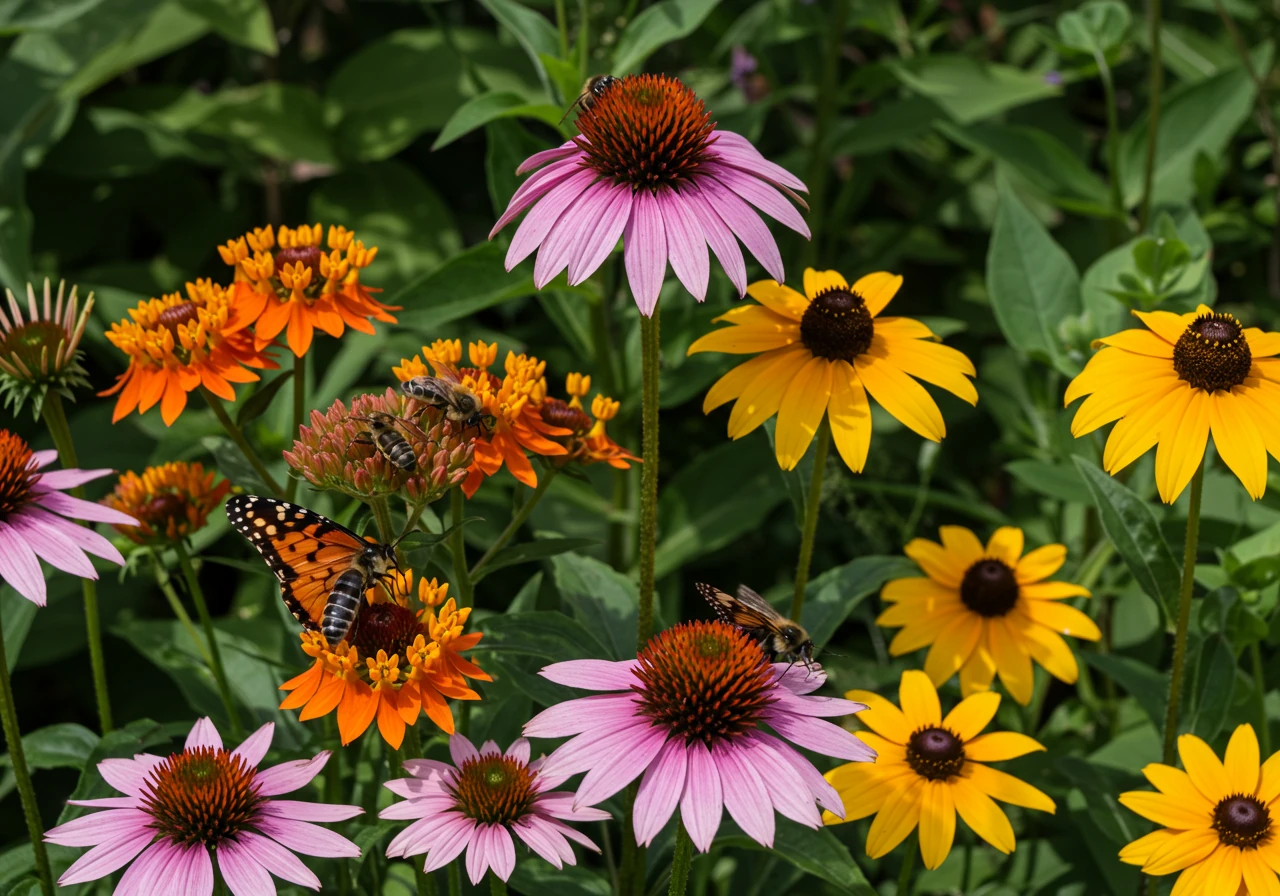
Ah, spring! That glorious time when garden centres beckon, full of possibility, and we all get the itch to add some new green friends to our yards. Planting in spring feels *so* hopeful, doesn't it? But let's make sure that hope translates into long-term success, whether you're gardening right here in Kars, tending a beautiful plot over in Metcalfe, or landscaping anywhere across the Ottawa region. Setting your plants up for resilience right from the start makes all the difference for a thriving, lower-maintenance garden down the road.
First things first: give your new plant pals the best possible start. Before you even unwrap that root ball, think about their new home. Excellent Soil Preparation is Foundational for Healthy Gardens. Digging the right-sized hole is key – aim for about twice as wide as the root ball, but plant it no deeper than it was in its pot. You want the top of the root ball to be level with the surrounding ground. Gently loosen any roots that are tightly circling the pot (give 'em room to stretch!), place your plant, backfill the hole with the soil you removed (amending with compost is always a bonus!), and water it in well. Think of it as a comfy welcome hug for their roots. We can assist with proper garden installation.
Now, let's talk about *what* to plant. This isn't just about picking the prettiest flower (though that's fun too!). Smart Material Selection for Landscaping Projects, especially when it comes to plants, is crucial for resilience. Always choose plants rated for our specific climate zone here in the Ottawa area (we're generally Zone 5a, sometimes dipping into 4b in colder pockets). Even better? Consider incorporating native plants! These are the local superheroes of the plant world. They evolved right here, meaning they're naturally suited to our soil types, typical rainfall, and temperature swings. Native plants often require less water once established, are more resistant to local pests and diseases, and provide vital food and habitat for our local pollinators and birds. Win-win-win!
Choosing hardy, zone-appropriate, and perhaps native species dramatically reduces plant stress and your workload long-term. Healthier, well-adapted plants mean fewer problems, less emergency care, and ultimately, less need for major interventions or the kind of large-scale rescue operations provided by a Metcalfe Garden Clean Up Service or a general City Garden Clean Up Service down the line.
One final pro tip: read the plant tag… and believe it! That adorable little shrub might look perfect in that small spot *now*, but if the tag says it grows 8 feet wide, find it a different home. Always consider the *mature size* when choosing a planting location. Giving plants adequate space prevents future overcrowding, ensures good air circulation (which helps fend off diseases), and saves you from constantly battling back overgrown branches. Well-chosen, well-placed plants integrate beautifully into your overall landscape design, complementing everything from pathways to your lawn – and remember, a healthy lawn is part of the picture too, benefiting from its own specialized care like an Ottawa Lawn Care and Maintenance Program. Happy planting!
Spring Garden Timeline: Key Milestones
Early Spring (March-April)
Snow melt reveals debris. Assess winter damage (broken branches, salt burn). Perform initial clean-up. Prune dead/damaged wood. Check for frost heave.
Mid-Spring (April-May)
Soil becomes workable. Amend soil with compost. Apply pre-emergent weed control if needed. Divide overcrowded perennials. Start hardening off seedlings indoors.
Late Spring (May-June)
Plant tender annuals & veggies (after frost risk). Apply mulch. Begin regular watering & weeding schedule. Monitor closely for pests/diseases. Prune spring-blooming shrubs *after* flowering.
Ongoing Care
Maintain consistent watering, weeding, and monitoring throughout the growing season. Enjoy the results of your spring healthcare plan!
Quick Spring Wins: Top Tips for Busy Kars Gardeners
Hey Kars gardeners, feeling the spring rush? We get it! Life in and around Ottawa gets busy. Don't panic if you haven't got hours to spend in the garden! You can still score major yard points with minimal time by focusing on high-impact tasks. Think of these as your spring cheat sheet for maximum curb appeal with minimum sweat equity.
Focus on these quick wins:
- Banish Winter's Leftovers! A quick rake-up of dead leaves, fallen twigs, and general gunk from your lawn and garden beds works wonders. Seriously, it's like giving your landscape a desperately needed haircut after a long winter nap. Even 30 minutes makes a difference! If the debris pile looks more like Mount Logan than a molehill, and you just don't have the time, calling in an Ottawa Property Cleanup Service or even a dedicated team like the Metcalf Property Cleanup Service, if you're closer to that neck of the woods, might save your weekend (and your back!). A City Property Cleanup Service is also an option.
- Mulch Magic! Once the ground is clear-ish, applying a fresh layer of mulch (just 2-3 inches!) is arguably the biggest bang for your buck. It instantly tidies garden beds, suppresses sneaky weeds *before* they take over, and helps the soil retain moisture later when summer hits. Remember, healthy plants start below the surface, and while mulch isn't soil itself, ensuring good underlying Soil Preparation is Foundational for Healthy Gardens.
- Speed Pruning! Forget intricate shaping for now. Grab your pruners and play garden surgeon for 15 minutes: just snip off clearly dead, broken, or diseased branches on your shrubs and small trees. Use the scratch test if unsure (green underneath means alive!). This quick clean-up improves plant health and appearance instantly.
These power moves deliver big visual results fast, giving you that satisfying sense of accomplishment without eating up your whole Saturday. And hey, if tackling even these feels like too much, remember that professional help is available. Many companies offer a flexible City Property Cleanup Service – just be sure to peek at their Terms and Conditions so you know exactly what's included before booking.
Your Ottawa Spring Gardening Questions Answered (FAQ)
Got questions about getting your Ottawa garden going this spring? You're not alone! Between our unpredictable weather and sometimes stubborn soil, there's always something to figure out. Here are answers to some common head-scratchers:
Ah, the million-dollar question in Ottawa! The classic rule of thumb is to wait until after the Victoria Day long weekend (around May 24th). Our region's last expected frost date typically falls around mid-May, but Ma Nature loves to keep us guessing. Play it safe, especially with heat-lovers like tomatoes and peppers. If you *do* plant earlier, keep row covers or old blankets handy to protect plants if a late frost advisory pops up. And always 'harden off' seedlings (gradually expose them to outdoor conditions for a week or so) before planting!
You've likely got heavy clay soil, common in areas like Greely and Osgoode. The absolute *worst* thing is trying to work it when it's wet – you'll just compact it more. Wait until it's moist but not soggy. The long-term fix is adding organic matter, like compost or well-rotted manure, every single year. Mix it into the top few inches. This gradually improves soil structure, making it easier to work and better for plant roots. If you're creating new beds or facing a real struggle, considering Professional Garden Installation can ensure the soil is properly prepared from the start. A City Garden Maintenance Service can also help with ongoing soil care.
That lovely white crust is almost certainly leftover road salt residue. It's terrible for plants because it draws moisture out of the soil and roots, causing dehydration and 'burn' (brown, crispy leaf edges). Gently flush the area with extra water a few times once the ground thaws to help wash the salt deeper into the soil, away from surface roots. Sometimes, removing the top layer of contaminated mulch or soil along the edge is necessary – a task often included in a thorough Metcalf Yard Cleanup Service if you need help tackling the edges.
Probably not! Cedars and other evergreens often get 'winter burn' – browning caused by harsh winds and winter sun drying out the foliage when the roots are frozen. It usually looks worse than it is. Be patient! Wait until late spring or early summer to see if new green growth emerges from the buds. *Only* prune out the parts that are confirmed dead (brittle, no green inside). Don't rush it. Keeping the area around the hedge tidy by removing fallen brown needles can help; this tidying is often part of services like a Marionville Yard Cleanup Service.
Hold your horses just a bit! Plants waking up are like groggy teenagers – they don't need a massive meal right away. For lawns, wait until the grass is actively growing (usually May). For garden beds, adding compost is often enough early on. If you do fertilize, choose a slow-release option or organic fertilizer rather than a quick-hit chemical one. Focus on overall soil health first; the nutrients will follow.
Key Takeaway for Kars Residents
Proactive spring care is an investment in your landscape's health and beauty. Addressing winter's toll early prevents bigger problems and ensures your plants thrive throughout the Ottawa growing season. Don't underestimate the power of a good clean-up, timely pruning, and soil nourishment!
Conclusion: Grow Forward with Confidence in Kars
So, there you have it – the lowdown on getting your Kars landscape back on its feet after another classic Ottawa winter. Think of our Spring Healthcare Plan as the ultimate spa treatment for your tired shrubs, sleepy perennials, and waking lawn. It’s about more than just a quick tidy-up; it’s a focused approach to:
- Assessing and addressing winter damage (goodbye, broken branches!).
- Clearing away suffocating debris (hello, happy soil!).
- Giving your soil a much-needed boost (because happy roots = happy plants!).
- Setting the stage for healthy, *resilient* growth all season long.
Taking these steps now prevents small issues from turning into big headaches later. Whether you're right here in Kars, enjoying the river views in Manotick, or tending your slice of green in Greely, giving your garden this focused attention is the *best* way to ensure a vibrant, beautiful growing season ahead. Your plants will practically thank you (probably with more blooms!).
Ready to kickstart your landscape's recovery but short on time or unsure where to begin? Let Clean Yards lend a hand! We offer comprehensive Spring Clean-Up services, expert Garden Consultations to assess your specific needs, and ongoing Garden Maintenance to keep things looking sharp.
Let us handle the hard work so you can enjoy a beautiful Kars garden this spring!
Explore Our Spring ServicesOr get in touch directly:
Contact Us Today